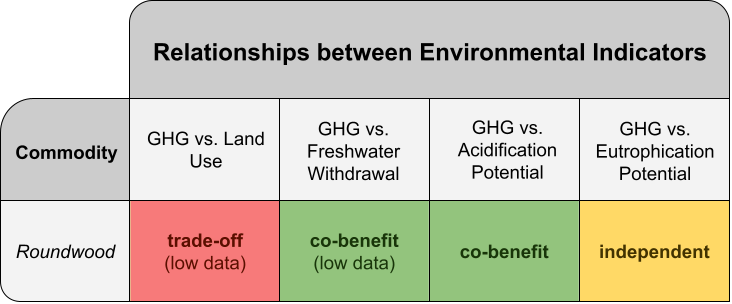
Roundwood is a raw material critical to the availability of paper products, manufactured products such as furniture, and construction materials like particleboard and strandboard. As of 2015, planted forests cover 277.9 million hectares globally, a number that is only increasing. Due to the ubiquity and magnitude of this demand, improving industry sustainability is critical.
Our data suggests that sustainability efforts in roundwood production should focus on the logging and hauling phase and that eutrophication potential does not require as much individual focus as it varies little in the industry. Trade-off relationships included an association between higher land use and lower GHG emissions. Longer rotation length was weakly associated with lower impact across indicators, but large spread indicates that focusing on rotation length alone is not a good strategy. More data is needed on freshwater withdrawal but overall, lower GHG emissions were associated with lower impact in this area and there was a co-benefit relationship between GHG emissions and acidification potential. Finally, impact across indicators was not associated with tree species.

